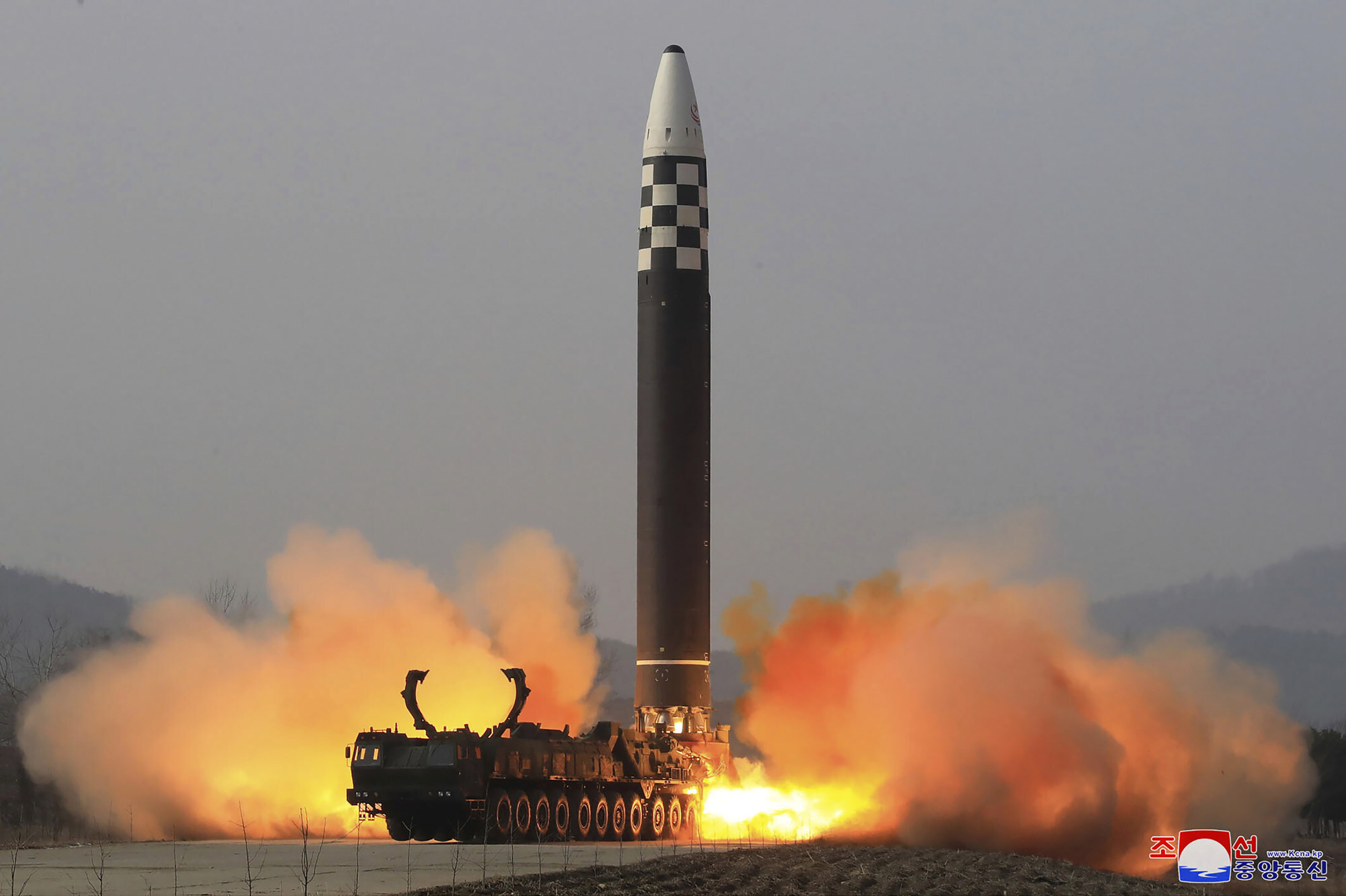
As North Korea’s Kim Jong-un threatens Asia with nuclear force, analysts caution against calling his bluff
- The North Korean leader hinted at preemptively using nuclear force against his Asian neighbours in a bellicose speech at a military parade earlier this week
- Analysts said the ‘remarkable’ escalation in rhetoric was aimed at Yoon Suk-yeol, South Korea’s hawkish president-elect – who dismissed it as ‘delusional’
Analysts parsing Kim’s speech at a nighttime parade this week say that – beyond the hyperbole – there are serious implications for Asia’s security, as the hermit state’s supreme leader signalled he would use the North’s nuclear force not just for defence, but to assert control.
He spoke of “rapidly-changing political and military situations and all the possible crises of the future” as North Korea’s most advanced weapons – including its largest intercontinental ballistic missile – were paraded before him.
Those weapons “can never be confined to the single mission of war deterrent”, Kim said – even if that is their “fundamental mission”.
North Korea threatens to resume nuclear tests, citing US ‘military hostility’
Cha Du-hyeogn, a senior fellow at the Asan Institute for Policy Studies in Seoul, said the speech “sent a message” that Kim would consider using nuclear weapons “preemptively, depending on the situation, and more freely pose nuclear threats if necessary going forward”.
Kim proposing the offensive use of nuclear arms to prevent “the violation of national interests” was “remarkable”, said Professor Yang Moo-jin of the University of North Korean Studies, adding that the remarks were likely meant as a warning to South Korean President-elect Yoon Suk-yeol.
In a written statement to Reuters, Yoon – who takes office on May 10 – responded to Kim’s speech by calling the North’s nuclear policy “delusional”, adding that Pyongyang was “failing to realise that there is nothing it can get” with its weapons.

“It’s become clear now that North Korea’s claim thus far that its nuclear development was for defence purposes was a lie,” said a spokeswoman for Yoon.
Moon Seong-mook, an analyst with the Seoul-based Korea Research Institute for National Strategy, said Pyongyang had made progress in miniaturising nuclear warheads to fit atop tactical guided weapons.
South Korea turns to US amid warnings of Kim Jong-un’s nuclear test plan
Monday night’s parade in Pyongyang, held to celebrate the 90th anniversary of the North’s armed forces, was the 12th presided over by Kim, who took power around a decade ago.
Ankit Panda, a nuclear policy researcher at the Carnegie Endowment for International Peace, said pictures of Monday’s parade showed what appeared to be three untested missiles.
“We’ve now seen three different large solid-fuel missiles paraded that have yet to be flight tested,” Panda wrote on Twitter, adding “I wouldn’t be shocked if one of these [is] flight-tested in due time”.
The rhetoric is stronger than before, but that’s not surprising
Kim’s bellicose speech on Monday may have been designed to attract Washington’s attention at a time when more provocative actions – such as a seventh nuclear test – were made riskier by Russia’s war in Ukraine, according to Kim Yong-hyun, a professor of North Korean studies at Dongguk University in Seoul.
“The rhetoric is stronger than before, but that’s not surprising because his statement was made at an event related to the military,” he said. “This does not herald an imminent provocative action.”
Additional reporting by Reuters


